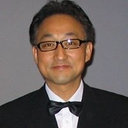Extract of Ulmus macrocarpa Hance prevents thrombus formation through antiplatelet activity.
Słowa kluczowe
Abstrakcyjny
Ulmus macrocarpa Hance (Ulmaceae) has been used as a traditional oriental medicine for the treatment of edema, mastitis, gastric cancer and inflammation. The aim of this study was to investigate the effects of Ulmus macrocarpa extract (UME) on thrombus formation in vivo, platelet activation ex vivo and fibrinolytic activity in vitro. To identify the antithrombotic activity of UME in vivo, we used an arterial thrombosis model. UME delayed the occlusion time by 13.4 and 13.9 min at doses of 300 and 600 mg/kg, respectively. UME significantly inhibited ex vivo platelet aggregation induced by collagen and adenosine 5'-diphosphate (ADP), respectively, but did not affect the coagulation times following activated partial thromboplastin and prothrombin activation. Therefore, to investigate the antiplatelet effect of UME, the effect of UME on collagen and ADP-induced platelet aggregation in vitro was examined. UME exhibited antiplatelet aggregation activity, induced by ADP and collagen. Furthermore, the fibrinolytic activity of UME was investigated. The results showed that UME significantly increased fibrinolysis at 1,000 mg/ml. In conclusion, the results suggested that UME may significantly inhibit artery thrombus formation in vivo, potentially due to antiplatelet activity, and also exhibits potential as a clot‑dissolving agent for thrombolytic therapy.



